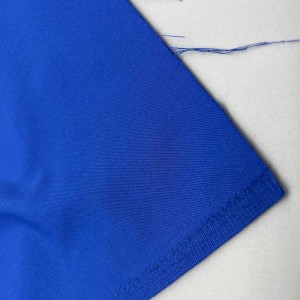Multi-functional fabric textiles have the functions of anti-ultraviolet fabric, anti-radiation fabric, flame retardant fabric, high-temperature resistant fabric, anti-oil fabric, anti-acid fabric, anti-static fabric, anti-bad weather and so on, to provide safety protection for workers in dangerous environment, in order to avoid huge loss of life and property. The specific classification is as follows: 3.1 by object of protection According to different objects of protection, functional protective textiles can be classified into general aramid paper insulation factory and special protective textiles. General operation protective textiles refer to textiles worn in general working environment for anti-fouling, anti-mechanical wear, anti-stranding and other common injuries, such as protective gloves, sleeve guards, leg guards, etc., which can provide safety protection for workers in the field of mechanical processing. aramid paper insulation factory
There is a wide range of general work protective clothing fabrics to choose from, and different grades of pure cotton, chemical fiber, blended fabrics are suitable for production. Special operation protective textile is suitable for the work environment that directly endangers the safety and health of workers, can avoid and reduce occupational hazards, its special features are strong, the fabric used must meet the national and industrial special protection function of the technical requirements, mainly used in chemical industry, metallurgy, petroleum, electronics, fire protection and other fields. 3.2 Classification by application field According to application field, functional protective textiles can be divided into public utility, military, medical and health, leisure and sports, industrial, construction, agricultural and other categories. Textiles for public utilities such as bus protective clothing mostly use reflective and photoluminescent materials to increase the eye-catching degree of objects (people, roads, etc.) to avoid accidents; Military protective textiles can be divided into bulletproof clothing, nuclear protective clothing, chemical and biological protective clothing, camouflage clothing, its role is to maximize the soldiers to effectively resist, prevent and fight against adverse weather conditions and conventional, biological and chemical warfare, according to the information, with multi-functional protective clothing against chemical and biological and harmful gases has come out; At present, the amount of medical protective textiles is large, requiring comfortable wearing, convenient operation, safety, anti-virus, anti-bacteria, wear-resistant, tear resistant, but also prevent accidental cutting, free from washing, reduce surgical infection and other multi-functional fabrics, isolation membrane Crosstech EMS fabric, aramid paper insulation factory
can not only prevent blood, body fluids and virus penetration, but also have air permeability and comfort; Developed PTFE composite membrane “SARS” protective clothing, with durable virus isolation, anti-blood penetration, anti-static fabric, waterproof and oil-proof fabric, antibacterial fabric and other multi-functional fabrics; Protective textiles for leisure and sports mainly refer to the protective clothing worn by motorcyclists, mountaineers, skiers and skaters, etc. A textile with active protection system has been developed, which not only effectively protects the human body from injury, but also has the advantages of air permeability, flexibility, flexibility, lightness, easy protection and so on. 3.3 Classification by Protection function The protection function of textile is designed for special working environment. These environmental factors can be roughly divided into physical factors (high temperature, low temperature, wind, rain, water, fire, dust, static electricity, radioactive sources, etc.), chemical factors (poison, oil, acid, alkali, etc.) and biological factors (insects, bacteria, viruses, etc.). According to the functional classification of protective textiles, there are mainly flame retardant fabrics, acid and alkali resistant fabrics, anti-static fabrics, waterproof and moisture permeable, radiation protection, cold and warm, ultraviolet, mosquito, anti-bacterial and anti-odor, oil and anti-fouling and other multi-functional fabrics.
Post time: Dec-10-2022

